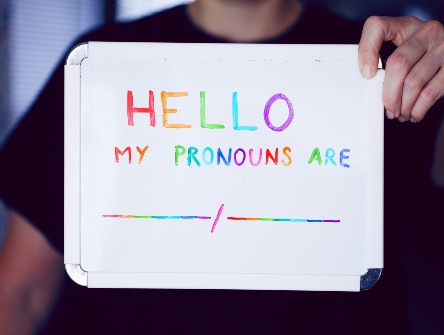One size does not fit all
Court gowning procedures across Canada need to be more flexible and inclusive.

Lawyers have been wearing robes dating back to the Middle Ages. The legal profession considers it a grand tradition, which is fair, but we need to adapt it to suit the needs of the day.
My views of gowning began to evolve with my participation in the CBA Women Lawyer’s Forum Gowning Sub-Committee. In 2016, the WLF tabled a resolution on accommodating maternity in court gowning at the Mid-Winter Meeting in Ottawa, which was passed by Council.
One might ask why there has to be a resolution to accommodate pregnancy in traditional gowning requirements? Unfortunately, the sub-committee was struck after a member of the WLF told her story of having to ask leave from each Court of Appeal justice hearing her matter to modify her gowns to accommodate her pregnancy. She was appearing at the Ontario Court of Appeal, which at the time did not have a written gowning policy.
Personally, I have had few opportunities to gown in my career. I don’t even own a gown. The rare times I needed one, I would borrow from a male associate in my office. Measuring 5’1, I had to pin up the sleeves. The shirt tucked in my pants almost hit my knees, and the waistcoat did nothing for my waist. I had to borrow my dad’s cufflinks – which I don’t think was how he pictured handing them down (sorry little brother). After a week of stress sweating in the same shirt, I was glad for the matter to conclude. I’m sure the court was too.
Now, three years later, while researching the gowning policies of courts across Canada, I have come to realize how complicated it is to know when and how to gown in court. To my surprise, some courts don’t even have written policies. Those that do cover a wide spectrum, ranging from strict and specific, to broad and vague.
How would a lawyer from another jurisdiction know what is required to “gown”? What about a junior lawyer or a sole practitioner? And what happens when a lawyer must modify their “gown” due to personal circumstances, such as pregnancy? And don’t get me started about trying to find any information on court websites across Canada.
Anecdotally, I have heard stories of counsel who were pregnant having to announce in open court that their gowns were altered, i.e. waistcoats not worn, or unbuttoned, because they were pregnant. Or pregnant counsel worrying about their pants falling when having to stand up to speak because they were not buttoned up all the way. I would find all of this a great distraction from the matter at hand – the legal matter that I’m supposed to be arguing in court.
You would think the courts and practitioners would have already ironed this out by now. After all, female counsel appear in court regularly. It is also not unusual for them to become pregnant. How is it, then, that our courts in Canada lack clear exemptions to traditional gowning attire and discrete processes to disclosure the accommodation to court.
Shockingly, of our 31 superior, federal and appellate courts across Canada, 29 per cent do not have written gowning policies, including the Supreme Court of Canada. A majority have a written gowning policy that states when counsel is required to gown for court appearances. Twenty-three per cent have a written gowning policy but do not have any exemptions or discrete processes to disclose a gowning modification. Another one in four has an explicit pregnancy exemption, and the remaining 23 per cent have personal circumstance exemptions.
For robes to continue to be a symbol of equality in the legal profession, court practice directives must reflect the realities of counsel appearing in court. Embracing inclusive gowning rules benefits not only women lawyers, but also lawyers who, due to reason of disability or size, may also find the gowning rules to be restrictive and inaccessible. Simple changes to allow flexibility in gowning will signal that all counsel are welcome and included in courts across Canada.


